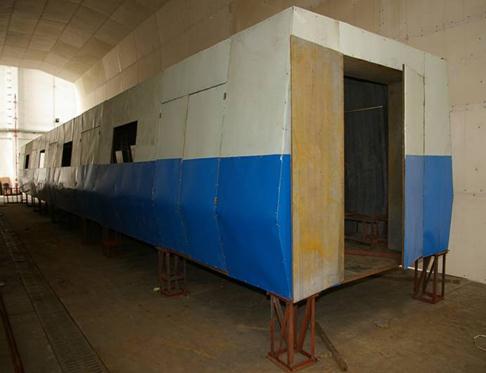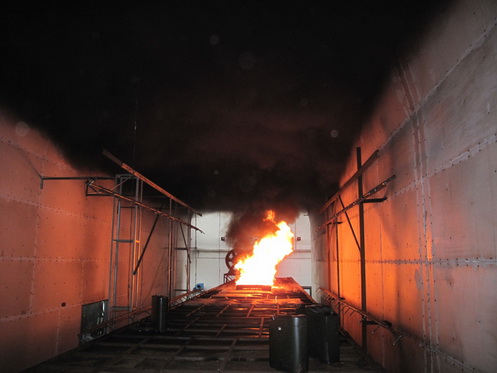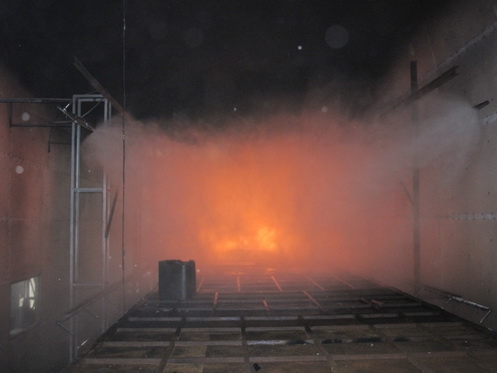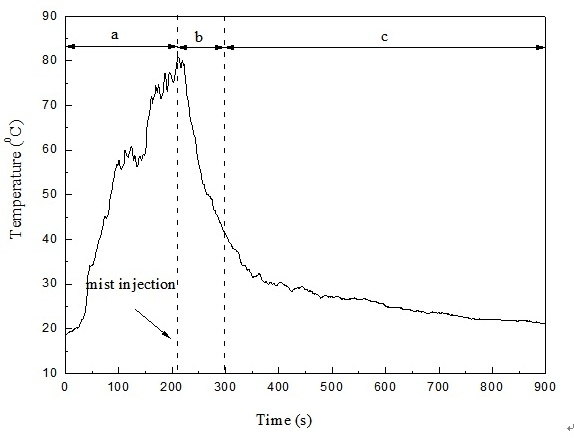In recent years, the railway develops rapidly in China, which leads to the increase in the number and length of railway tunnels. There are more and more super long tunnels even more than 30km. For this case, once a train catches fire in the tunnel, it is difficult to pull out the tunnel in a short time and it is also hard for the external rescue to reach the inside of the tunnel, causing difficulties for personnel evacuation. Accordingly rescue stations can be setup in the middle of some super long tunnels as a new type of strategic counteract design for fire accident. In this case, if the train on fire can't pull out of the tunnel in a short time, it can stop at the rescue station, the fire can be controlled and suppressed by the fire control facilities at the rescue station, and in this way the personnel evacuation can be achieved. Whereas, until now, very few studies can be found on the fire development characteristics and fire protection measures when a train on fire stops at the rescue station. The research team led by Dr. Longhua Hu had successfully carried out, together with the Hefei KDLIAN Safety Technology Co., Ltd., a project supported by Ministry of Railway on Research on super long railway tunnel fire protection system .
The project was launched in September, 2009, and the experimental scheme passed the expert verification in March, 2010. So far, research work has been carried out smoothly, including:
(1) A full-scale experimental platform was built to study smoke propagation, fire detection and fire suppression in case of a train caught on fire stopped at the rescue station of super long railway tunnel, which can be used to study the effectiveness of fire detection, fire suppression technology and smoke control technology. (Fig. 1)
(2) Extensive simulative experiments had already been carried out on fire behavior, smoke spread under different longitudinal ventilation condition. The evolution of fire characteristic parameters such as temperature, concentration of toxic gases and thermal radiation were measured, including fire sources were located on top of, in and under the train carriage individually. (Fig. 2)
(3)The fire suppression effect of water mist suppression system and water gun suppression system on fire evolution and their radiation block effect on the rescue platform were also studied. (Fig. 3)
The research results will be helpful in understanding the fire dynamics by providing benchmark data and of practical significance for the design and evaluation of smoke control, fire detection and fire suppression system in case of a train fire at the rescue station of super long tunnel.
 |  |
Fig. 1 Full scale experimental facility | Fig.2 Smoke spread experiments |
 |  |
Fig.3 Water mist suppression experiments |



